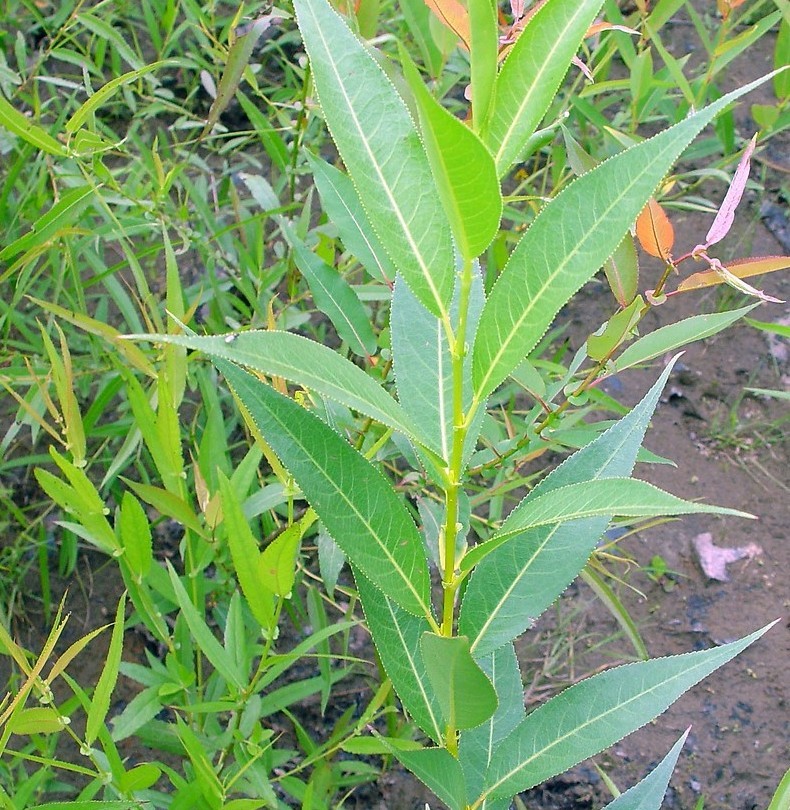Corkscrew willow
(Salix babylonica matsudana)

Description
Salix babylonica is a species of willow native to dry areas of northern China, but cultivated for millennia elsewhere in Asia, being traded along the Silk Road to southwest Asia and Europe. Salix babylonica is a medium- to large-sized deciduous tree, growing up to 20–25 m (66–82 ft) tall. It grows rapidly, but has a short lifespan, between 40 and 75 years. The shoots are yellowish-brown, with small buds. The leaves are alternate and spirally arranged, narrow, light green, 4–16 cm (1.6–6.3 in) long and 0.5–2 cm (0.2–0.8 in) broad, with finely serrate margins and long acuminate tips; they turn a gold-yellow in autumn. The flowers are arranged in catkins produced early in the spring; it is dioecious, with the male and female catkins on separate trees. Salix babylonica was described and named scientifically by Carolus Linnaeus in 1736, who knew the species as the pendulous-branched ("weeping") variant then recently introduced into the Clifford garden in Hartekamp in The Netherlands. Early Chinese cultivar selections include the original weeping willow, Salix babylonica 'Pendula', in which the branches and twigs are strongly pendulous, which was presumably spread along ancient trade routes. These distinctive trees were subsequently introduced into England from Aleppo in northern Syria in 1730, and have rapidly become naturalised, growing well along rivers and in parks. These plants are all females, readily propagated vegetatively, and capable of hybridizing with various other kinds of willows, but not breeding true from seed. This type of tree is grown very easily through plant propagation. Two cultivated hybrids between pendulous Salix babylonica and other species of Salix willows also have pendulous branchlets, and are more commonly planted than S. babylonica itself: Salix pendulina, a hybrid with S. babylonica accepted as the female parent, but with the male parent unidentified, probably being either S. euxina or S. fragilis, but perhaps S. pentandra. Of these possibilities, S. fragilis is itself a hybrid, with S. alba and S. euxina as parental species. Salix sepulcralis, is a hybrid between S. alba and S. babylonica.
Taxonomic tree:







